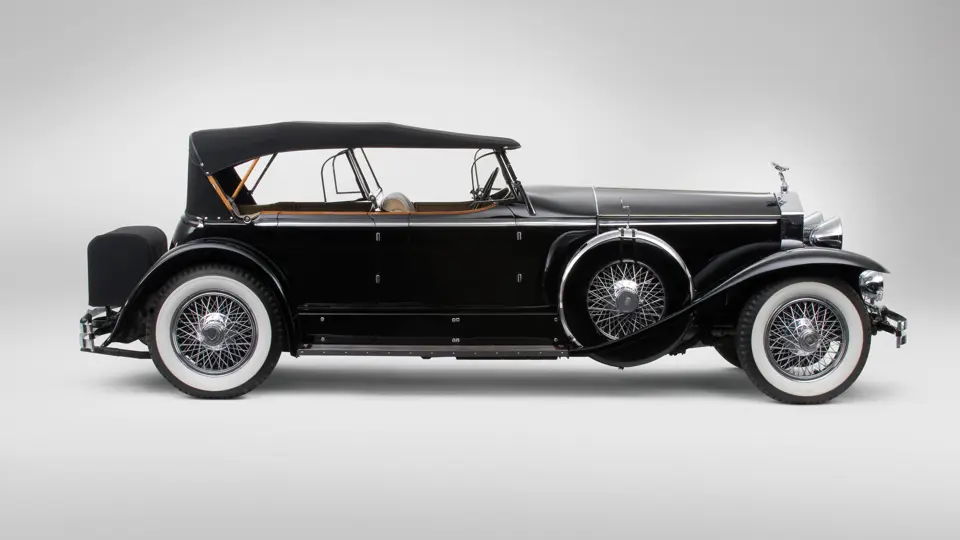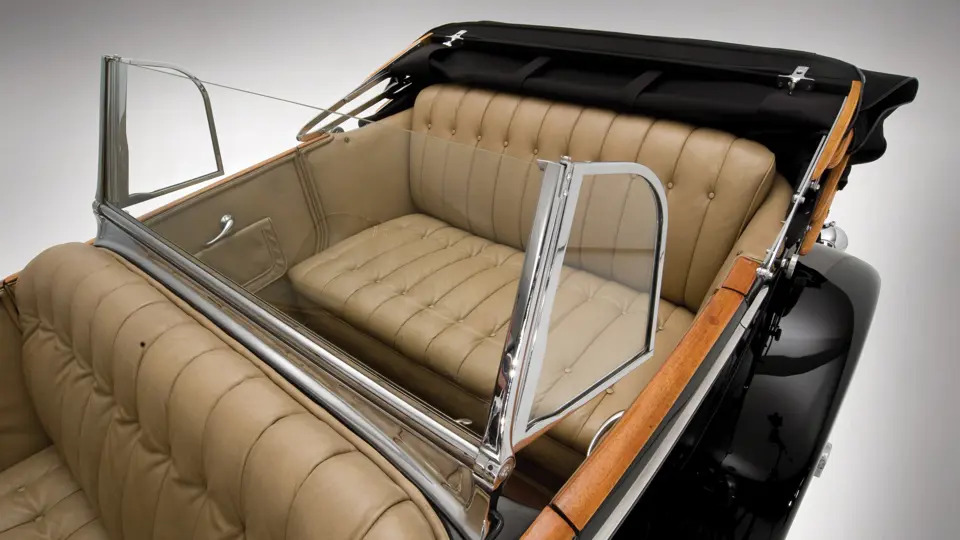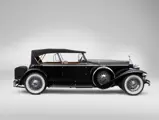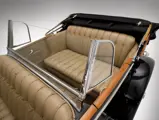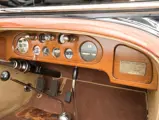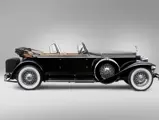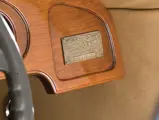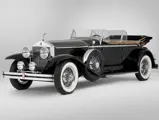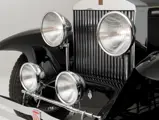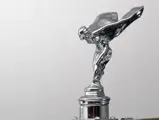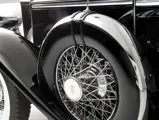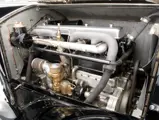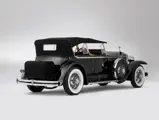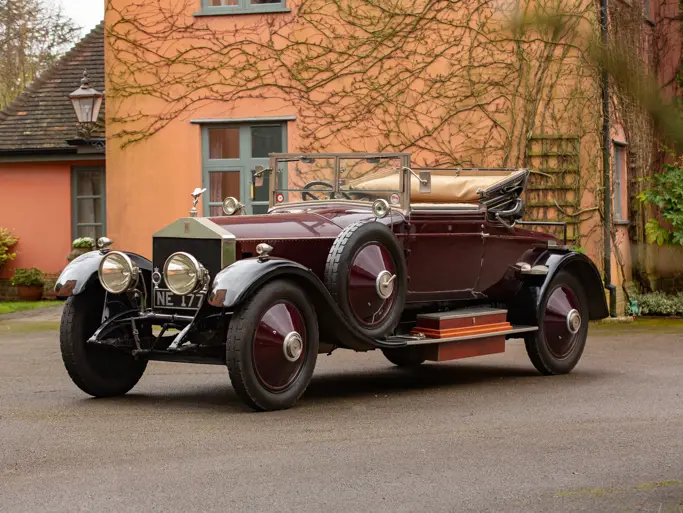113 hp, 7,668 cc OHV inline six-cylinder engine, three-speed manual transmission, live-axle suspension with front semi-elliptic leaf springs and cantilevered rear leaf springs, and four-wheel servo-assisted drum brakes. Wheelbase: 146½"
- Sporting open coachwork
- Well maintained older restoration
- Fascinating early provenance, including Alphonzo E. Bell and Dave Garroway
- Formerly in the Collection of Richard and Linda Kughn
Rolls-Royce began to build automobiles in Springfield, Massachusetts in 1921. The location was chosen for its proximity to major northeastern markets and important suppliers as well as the supply of skilled craftsmen trained in the armories of the Connecticut River Valley and the New England machine tool industry. The first 40/50 hp Silver Ghosts were shipped from England and assembled in Springfield, under the direction of a cadre of some fifty experienced Rolls-Royce hands who emigrated from Derby.
Specifications slowly began to evolve, first substituting locally sourced components for those from English suppliers and later effecting specific modifications to better adapt American-built Rolls-Royce automobiles to the North American market.
More significantly, the bespoke, custom-ordered coachwork that graced Derby-built chassis did not fit American buying patterns, and from the beginning, Rolls-Royce offered standard coachwork, usually painted and trimmed to order. Bodies were ordered from a number of independent coachbuilders in quantities of up to twenty at a time. They were badged “Rolls-Royce Custom Coach Work” and were mainly built by Brewster, but also by Biddle and Smart, Hibbard & Darrin, New Haven, Merrimack, Smith Springfield and Willoughby. By 1923, business was good enough for Rolls-Royce to establish its own coachworks in Springfield. In quality of construction, finish and fittings, the Rolls-Royce Custom Coach Work bodies and later Rolls-Royce catalogued coachwork from Brewster (after its acquisition in 1926) are as good as anything built anywhere in the world. In design, they are considered to be among the most attractive, balanced, pleasing and functional bodies ever built for any luxury marque.
The 40/50 hp Silver Ghost was superseded in 1926 by the Phantom I, suitably modified for left-hand drive and manufacture in the United States. Introduction of the Phantom I coincided with integration of Brewster’s coachworks with Rolls-Royce’s American operations and the addition of several new offerings including the very attractive open Ascot, Derby and Speedster. Called touring car styles by other manufacturers, Rolls-Royce described them in its advertising materials as Sport Phaetons, a description that aptly characterizes their elegance, style and flair.
By 1929, further refinements included an aluminum cylinder head, chrome-plated exterior brightwork, flat-bar bumpers, servo-assisted four-wheel brakes, thermostatically controlled radiator shutters and conical headlamp housings. Highly evolved to adapt to the road conditions and driving preferences of North American customers, with ample parts and service support from both Rolls-Royce representatives and its network of U.S.-based suppliers, it is no surprise that in this booming year Rolls-Royce sold some 350 automobiles.
One of them was this beautiful Ascot Sport Phaeton, delivered to Alphonzo E. Bell, California entrepreneur and developer of the exclusive Bel Air enclave of Los Angeles. A double Olympic tennis medalist in 1904 (bronze in singles and silver in doubles), Bell had begun to develop Bel Air in 1922, and the project’s success is mirrored in the style, beauty and exclusivity of Bell’s Rolls-Royce Phantom I Ascot.
The Ascot’s elegant lines are essentially the same as the highly regarded Derby phaeton and its near-identical twin, the upswept rear-fender Speedster, and very similar to the extremely rare York Roadster. Refined by a nearly horizontal continuous concave accent at the beltline, raked single-piece windscreen and gracefully flowing fenders, the Ascot’s sporting flair and superb proportions make it one of the most attractive of all open Springfield Rolls-Royces.
By 1946, Dave Garroway, the famous radio announcer and future host of NBC’s original Today Show, is believed to have owned it. Having already received a quality restoration, S364LR next came under the long-term ownership of Richard and Linda Kughn, the respected Detroit-area collectors. Since that time, the car has passed through respected private collections and received selective cosmetic work as necessary. The high caliber of its original restoration, while completed decades ago, and the attentive care it has received remain apparent today. Nonetheless, the interior upholstery does display some age-appropriate patina.
Presented in black with tan leather upholstery and a black cloth top, its subtle design is complemented by the concave beltline indicative of the Ascot style, which in this case consists of brightly polishing the underlying aluminum of the coachwork. Chrome wire wheels are mounted with wide whitewall tires, and the dual side-mounted spares have black metal enclosures with chrome bands and side-view mirrors. Mounted above the chrome-plated flat front bumper is a pair of Pilot-Ray driving lamps. The raked, single-pane windscreens are both fitted with wind wings, and a black cloth-covered luggage trunk is fitted as well.
S364LR is one of the rarest and most desirable of all Springfield Rolls-Royces. Well preserved, it is a particularly elegant design of a beautifully engineered motor car.

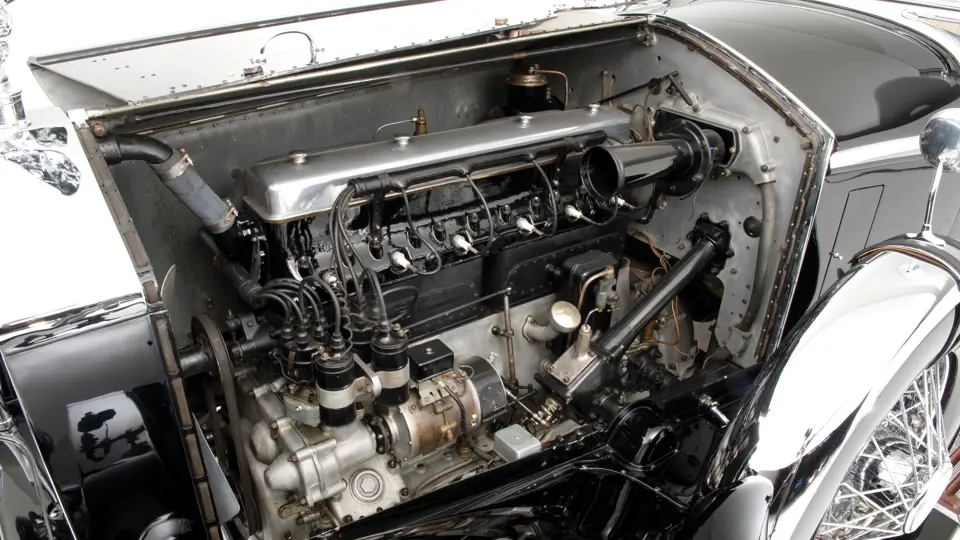


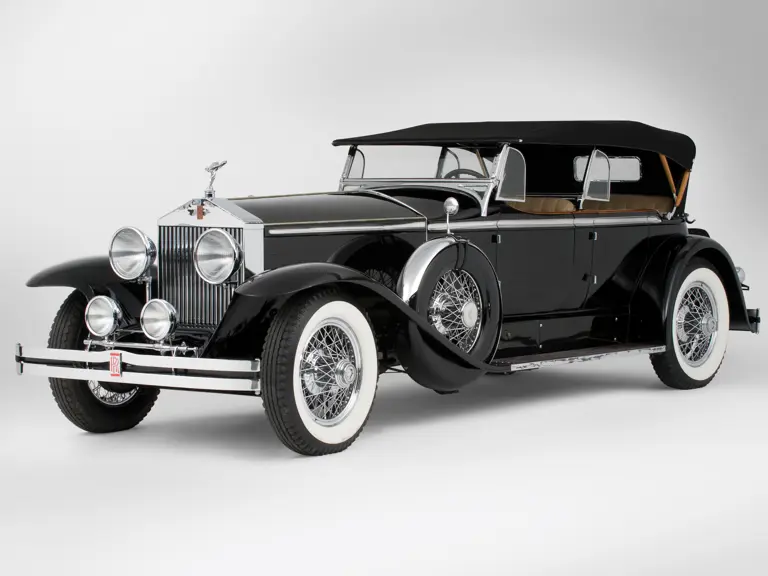
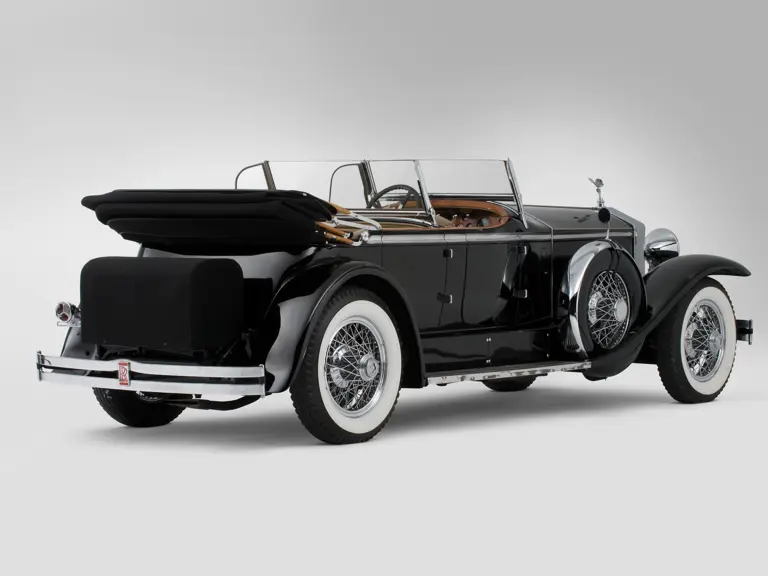
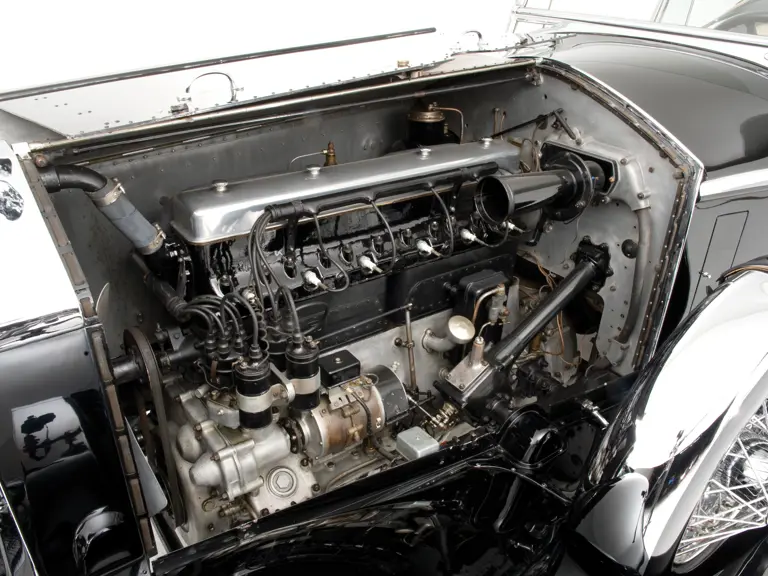
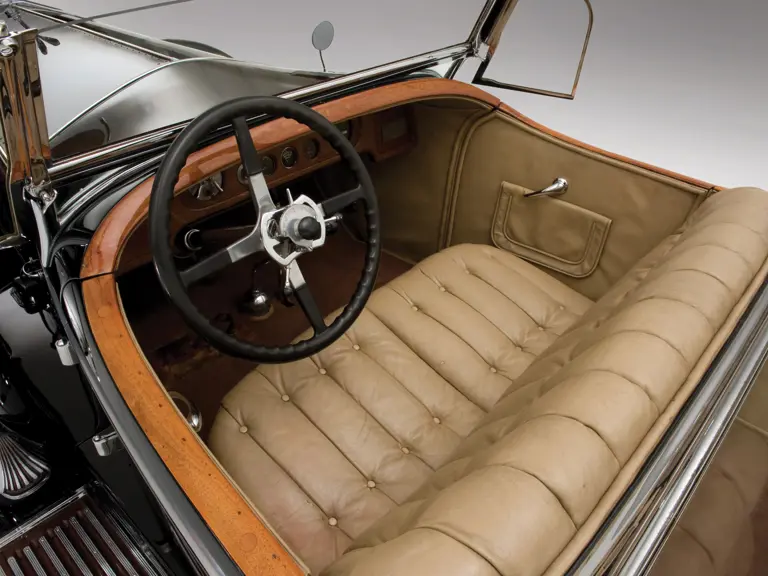
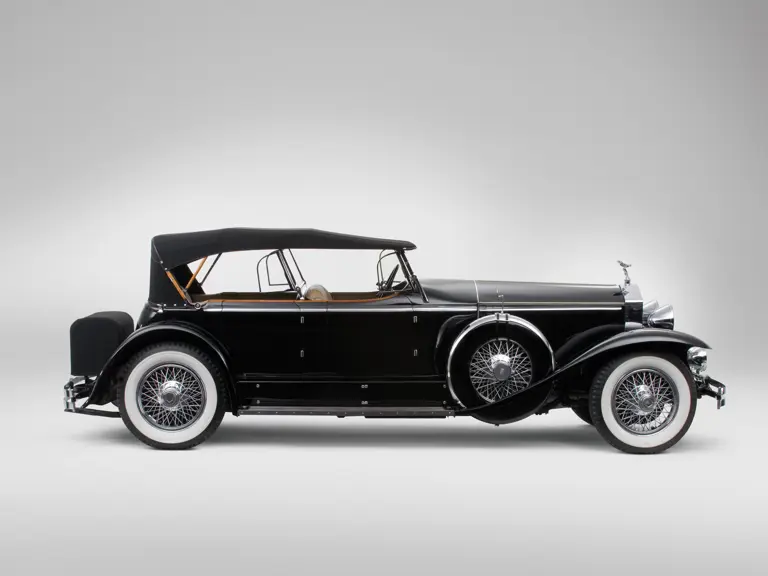
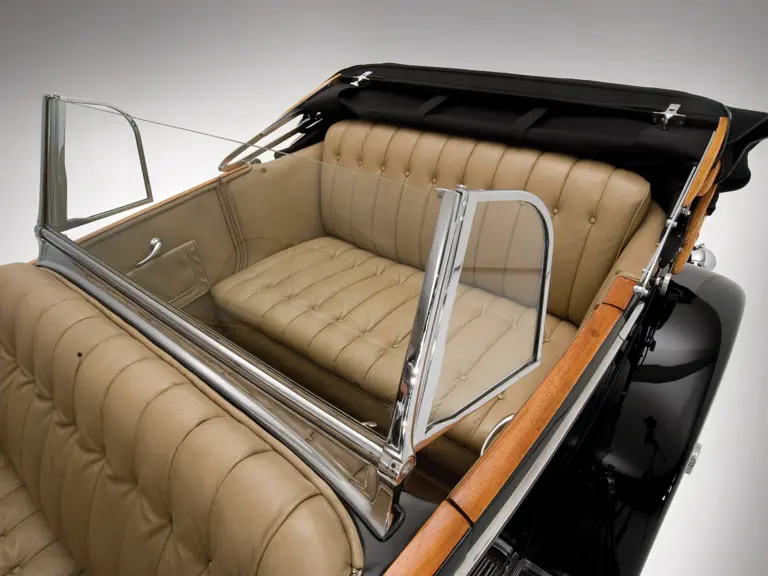

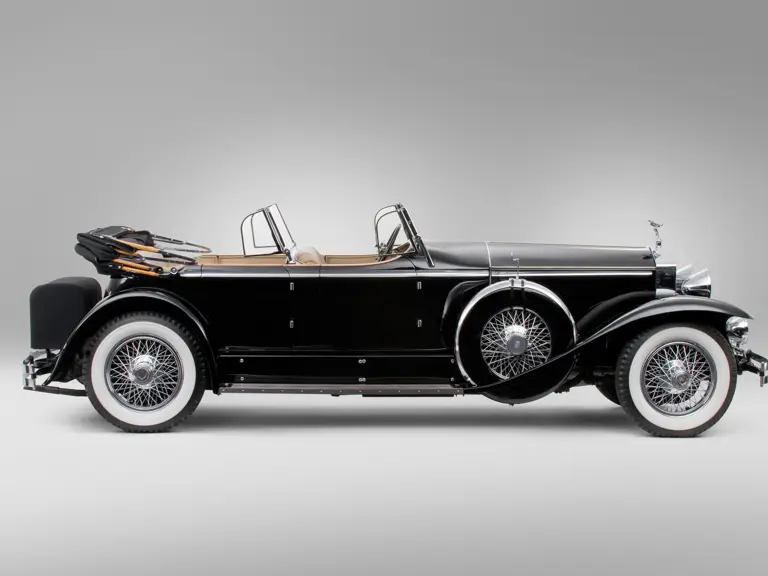
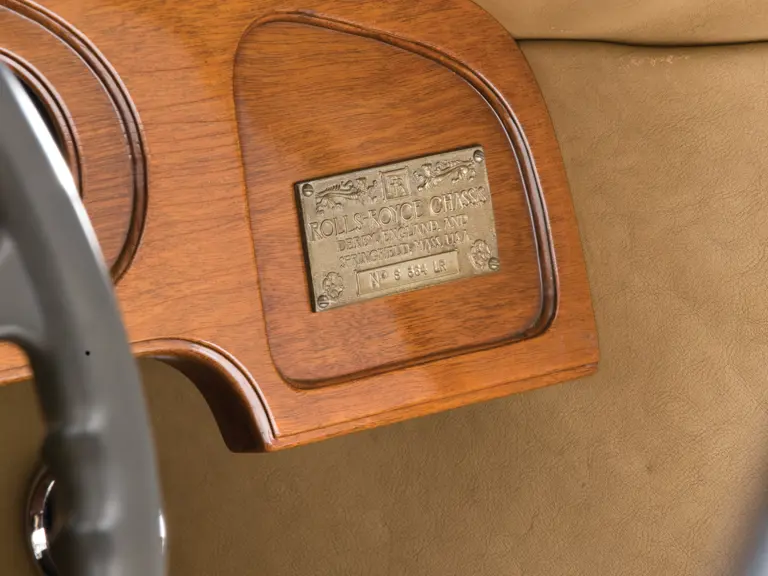
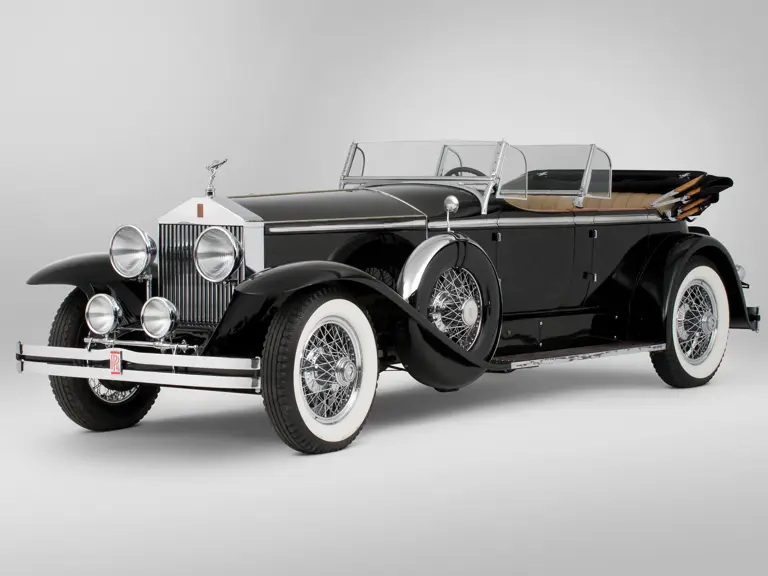
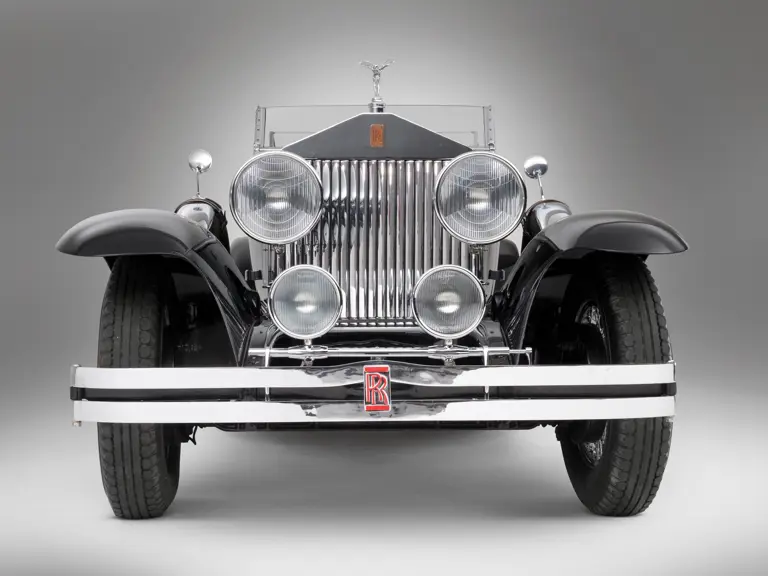

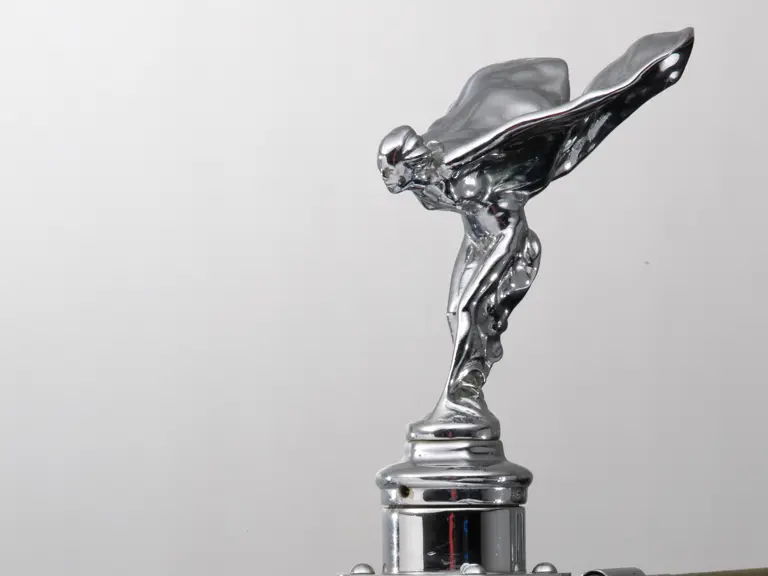
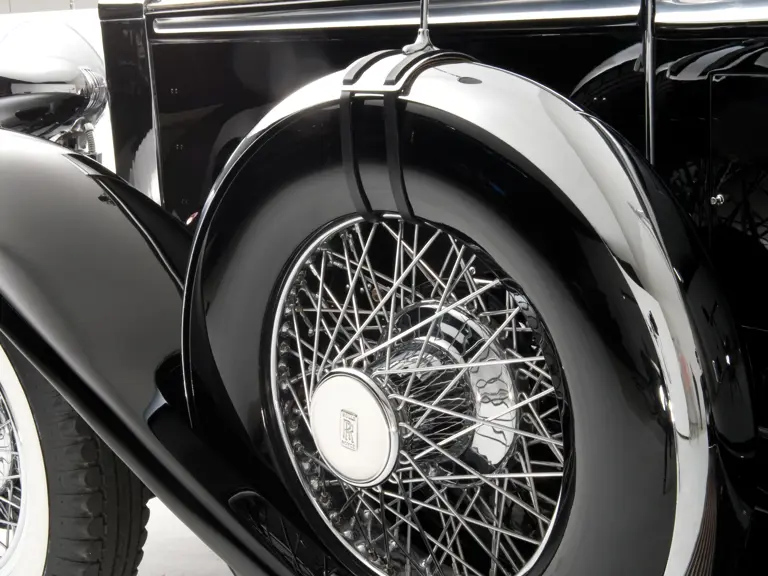
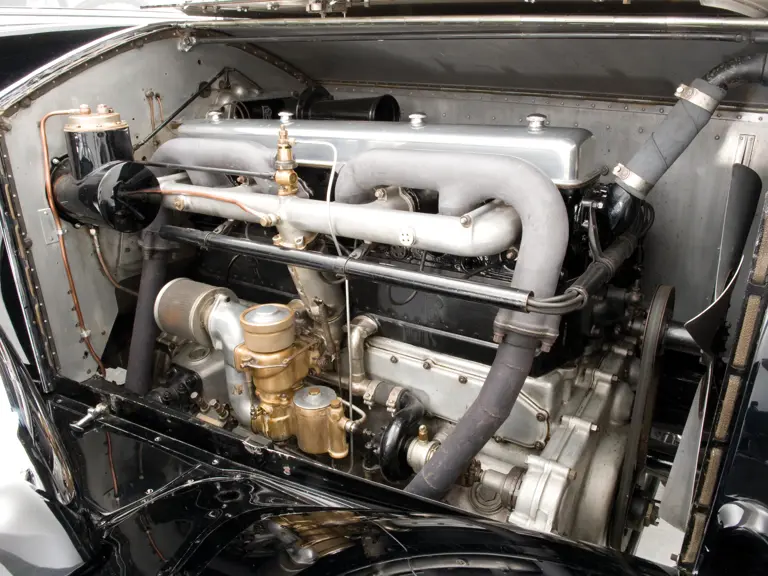
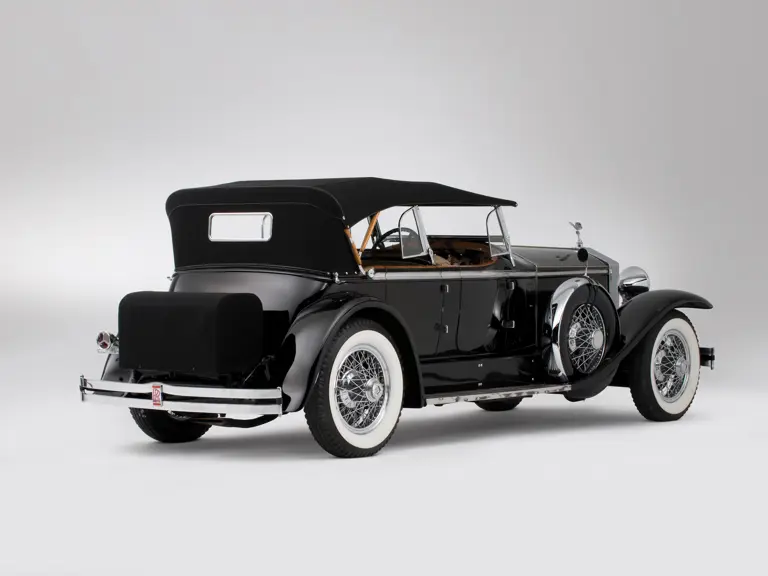

 | Monterey, California
| Monterey, California
